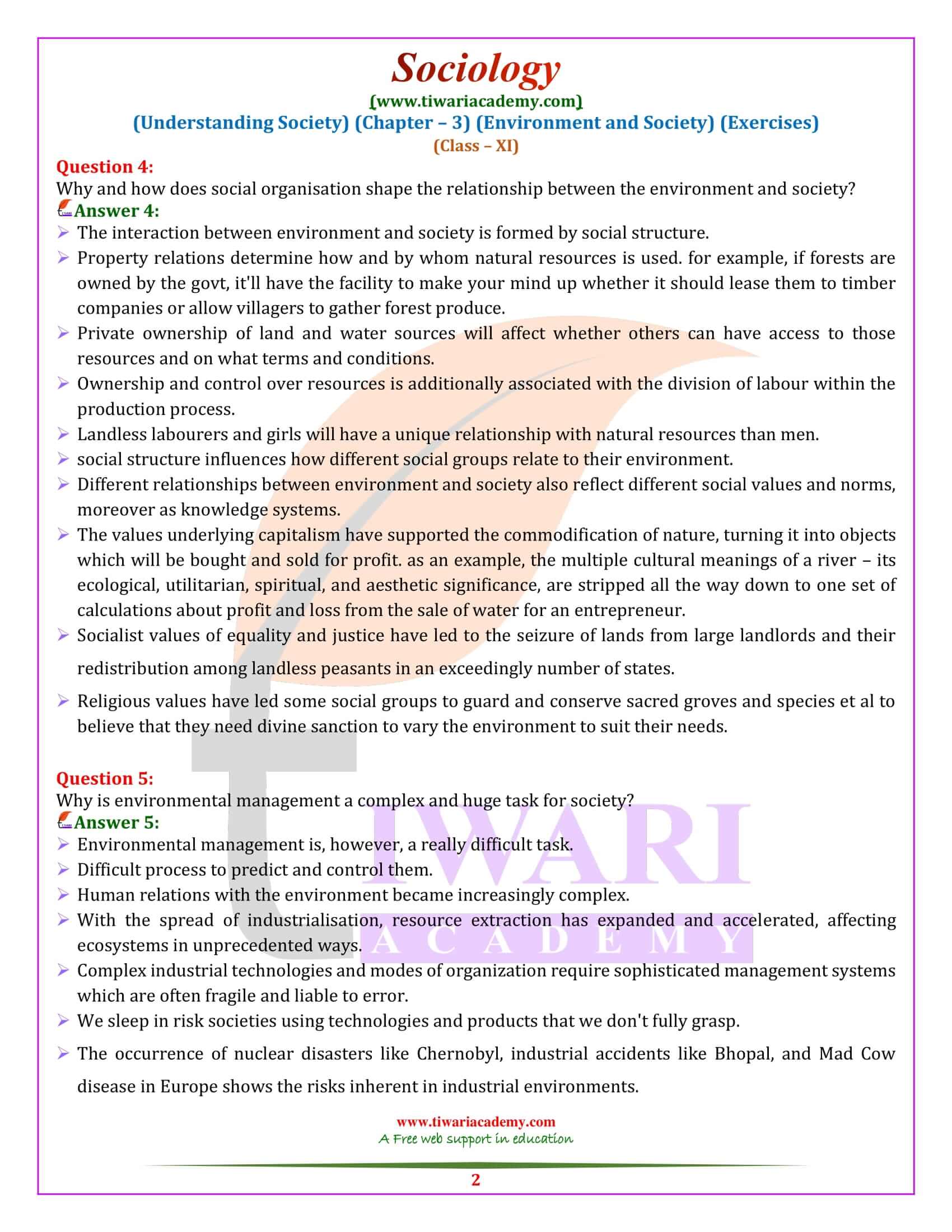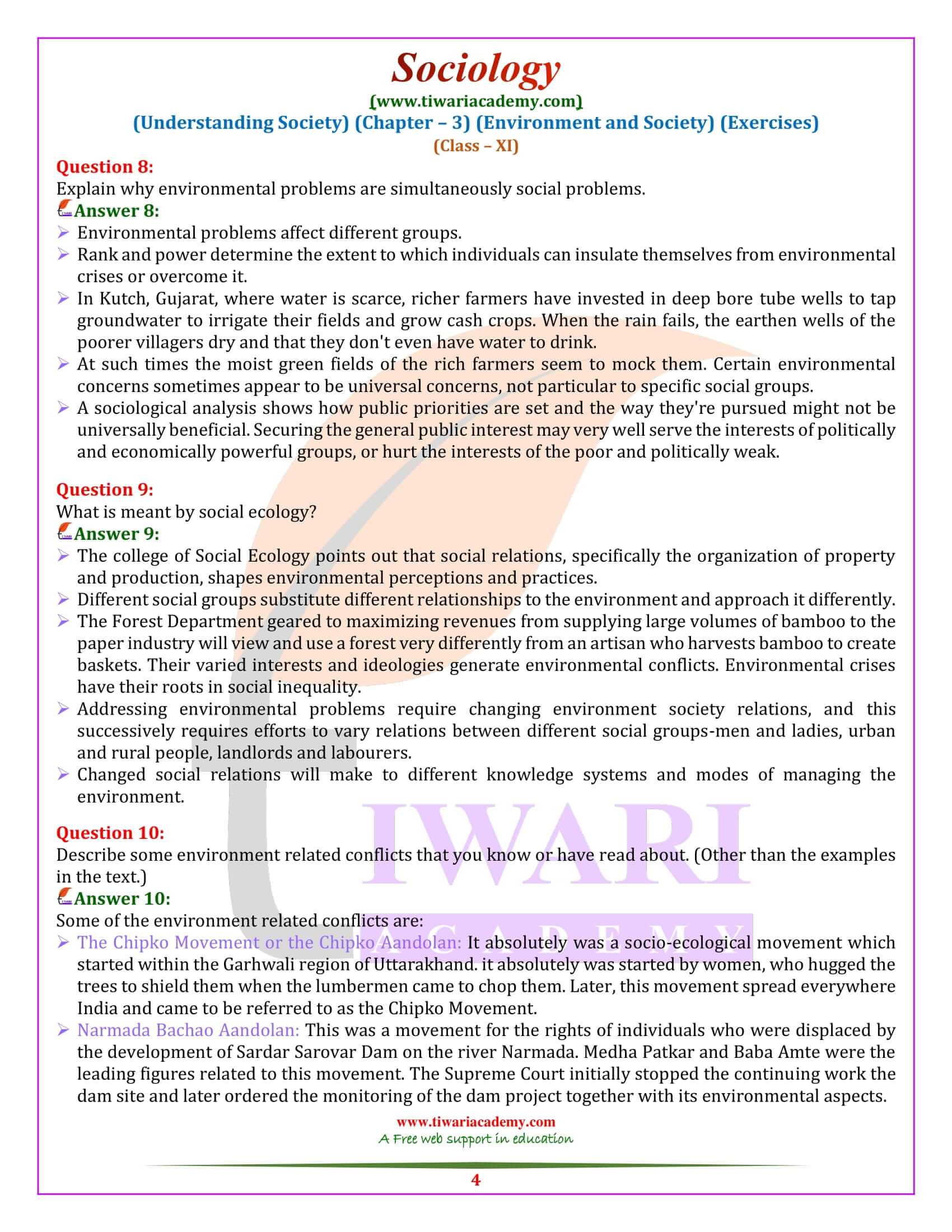NCERT Solutions for Class 11 Sociology Chapter 3 Environment and Society in English Medium updated for session 2025-26. Class 11th Sociology Chapter 3 of Part II Understanding Society is important for exams. Prepare here with multiple choice questions and extra questions answers with explanation.
Class 11 Sociology Chapter 3 Environment and Society Question Answers
Describe in your own words what you understand by the term ‘ecology’.
- All societies have an ecological basis. The term ‘ecology’ denotes the online of physical and biological systems and processes of which humans are one element.
- Mountains and rivers, plains and oceans, and therefore the flora and fauna that they support, are a component of ecology.
- The ecology of an area is additionally full of the interaction between its geography and hydrology. as an example, the plant and animal life unique to a desert is customized to its scarce rainfall, rocky or sandy soils, and extreme temperatures.
- Ecological factors limit and shape how masses can sleep in any particular place.
Why is ecology not limited only to the forces of nature?
Ecology has been modified by human activity. It appears to be a natural feature of the environment. for instance, true of aridity and flood is commonly produced by human intervention.
Deforestation within the upper catchment of a river may make the river more flood- prone.
Temperature change led to by heating is another instance of the widespread impact of human action on nature.
Over time, it’s often difficult to separate and distinguish between the natural and human factors in ecological change.
There are other ecological elements around us that are obviously human-made.
An agricultural farm with its soil and conservation works, its cultivated plants and domesticated animals, its inputs of synthetic fertilisers and pesticides, is clearly a person’s transformation of nature.
The built environment of a city, made up of concrete, cement, brick, stone, glass and tar, uses natural resources but is incredibly much a person’s artifact.
Why and how does social organisation shape the relationship between the environment and society?
The interaction between environment and society is formed by social structure.
Property relations determine how and by whom natural resources is used. for example, if forests are owned by the govt, it’ll have the facility to make your mind up whether it should lease them to timber companies or allow villagers to gather forest produce.
Private ownership of land and water sources will affect whether others can have access to those resources and on what terms and conditions.
Ownership and control over resources is additionally associated with the division of labour within the production process.
Landless labourers and girls will have a unique relationship with natural resources than men.
Social structure influences how different social groups relate to their environment.
Different relationships between environment and society also reflect different social values and norms, moreover as knowledge systems.
The values underlying capitalism have supported the commodification of nature, turning it into objects which will be bought and sold for profit. as an example, the multiple cultural meanings of a river – its ecological, utilitarian, spiritual, and aesthetic significance, are stripped all the way down to one set of calculations about profit and loss from the sale of water for an entrepreneur.
Socialist values of equality and justice have led to the seizure of lands from large landlords and their redistribution among landless peasants in an exceedingly number of states.
Religious values have led some social groups to guard and conserve sacred groves and species et al to believe that they need divine sanction to vary the environment to suit their needs.







